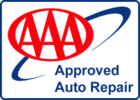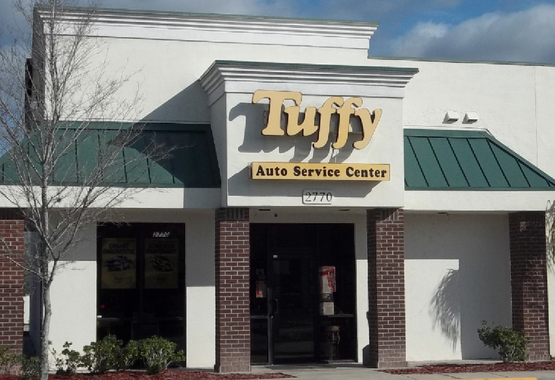Starting in 1996, Tuffy St. Johns service technicians have been able to use a standardized diagnostic system to help determine what is wrong with a vehicle. This diagnostic system works in tandem with the Engine Control Modules for each vehicle's engine. The Engine Control Module is a computer that monitors and controls many engine functions.
Sensors throughout a vehicle send readings to the Engine Control Module. These readings help the computer make adjustments in various vehicle systems to allow for constantly changing driving conditions and even to compensate for minor problems. However, if the computer encounters a situation it can't adjust for, it turns on the Check Engine light. (The Check Engine light is called the “service engine soon” light on some vehicles.)
If the Check Engine light is burning steadily, it indicates a problem that needs to be taken care of soon. If it is flashing, however, the vehicle needs immediate attention at Tuffy St. Johns. When the Check Engine light is flashing, the vehicle should not be driven at high speeds, haul heavy loads or tow a trailer. St. Johns drivers need to understand that doing so can cause major damage.
When a vehicle is brought to Tuffy St. Johns in St. Johns because the Check Engine light is on, a technician will scan the Engine Control Module to learn why it turned the light on. The answer comes as a “trouble code.” The technician has access to software that allows him to enter the code and find out what it means. The software will also let your Tuffy St. Johns technician know what might be causing the problem and how to diagnose it.
Notice that the trouble code does not tell your technician at Tuffy St. Johns exactly what is wrong with the vehicle. It can only let him know where to start looking to find the problem.
Scanning a trouble code and determining what it means is fairly simple for the pros at Tuffy St. Johns. But the ensuing process of actually diagnosing a vehicle's trouble can take a skilled technician some time. Sometimes this can add up to a significant repair bill. Some vehicle owners mistakenly believe that the “trouble code” is all they need and think they can then fix their vehicles themselves. Some have tried to save money by purchasing an inexpensive scanner, or they take their vehicles to an auto parts store that offers the scan for little or no cost.
These options are often not the money-savers they seem for St. Johns vehicle owners. They can end up costing the vehicle owner extra in unnecessary repairs and engine damage.
For example, the trouble code P0133 reads “Bank 1 sensor 1 circuit slow response.” Translated, that means the front oxygen sensor shows a slow response time in changing the mix of air to fuel. The seemingly obvious conclusion is that the sensor needs to be replaced. The vehicle owner purchases a sensor, installs it and happily goes on his way.
However, read the trouble again: a slow response time in changing the mix of air to fuel. Nowhere does this indicate that the sensor is bad. There are a lot of parts involved in changing the air-fuel mix, any of which could be causing a slow reaction time. Those include a bad or contaminated airflow sensor, an exhaust leak, a problem in the electrical system or a leak in the intake manifold. The sensor is merely relaying that the response time is slow; it doesn't indicate where the trouble is.
So the vehicle ends up with an oxygen sensor it did not need, and the delay in repairing the actual problem may have led to further damage to the engine. Both are added costs for the vehicle owner.
Cheap scanners also don't have the ability to read the history stored in an engine's computer. This operating history contains clues that can help in diagnosing engine trouble since it can indicate a developing problem. Tuffy St. Johns invests a lot of money in high-end diagnostic equipment so that we have access not just to service codes but also to the operating history of the engine.
On-board diagnostics, then, are a tool to help diagnose what is wrong with a vehicle. They cannot specify what part needs to be fixed or replaced, and they cannot replace a well-trained and well-equipped service technician.
Unless you are a trained mechanic, it's good auto advice to use Tuffy St. Johns for your car care. In the long run, it can save you time, unnecessary expense and frustration. Tuffy St. Johns can also help you keep up with your scheduled preventive maintenance, which can also save you on repair bills by alerting you to potential problems before they get expensive.
Tuffy St. Johns
2770 Racetrack Rd.
St. Johns , Florida 32259
904.230.3363
 Win a $50 Gas Card
Learn more
Win a $50 Gas Card
Learn more
 Have a promo code?
Have a promo code? Sign up and start Saving.
Learn more
Sign up and start Saving.
Learn more
 Win a $50 Gas Card
Learn more
Win a $50 Gas Card
Learn more
 Have a promo code?
Have a promo code? Sign up and start Saving.
Learn more
Sign up and start Saving.
Learn more
















